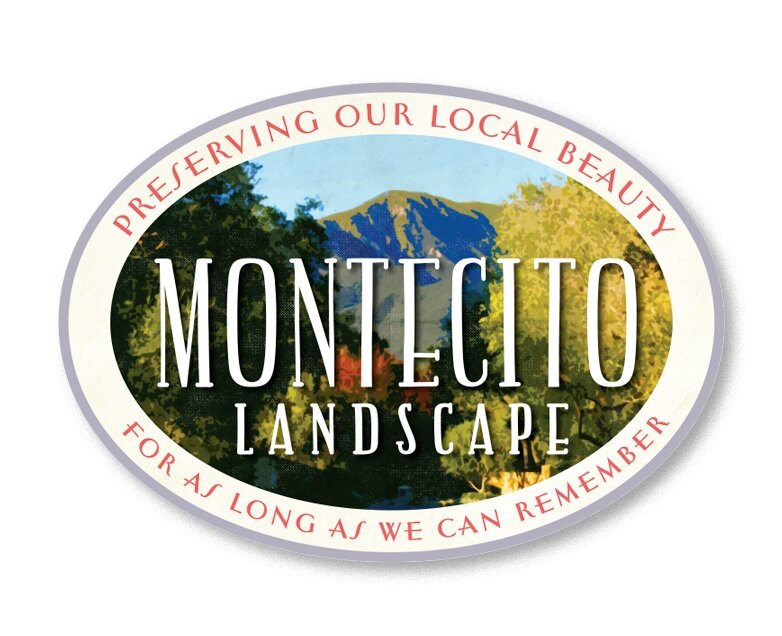A new style of edible garden-Tea Garden
Spring is officially here and with it comes warmer weather, welcome sunshine and an opportunity to spend more time out of doors in our gardens. Santa Barbara and Montecito are particularly glorious this time of year. I love to sit in my garden with a nice cup of tea and best of all tea made from freshly picked herbs and flowers. My tea obsession led me to a new type of Santa Barbara and Montecito edible landscape design I call a “Tea Garden”.
Tea Time
A “Tea Garden” or if you are so inclined, a “cocktail garden”, is a version of an edible or sensory garden through which you can stroll, picking flowers, leaves and even berries and bark all of which can be used to make herbal teas, tinctures, simple syrups, herbal salts and sugars, bitters, vinegars and cocktails.
Safe for kids and pets
I had the idea of designing tea gardens for others when I had a client whose baby liked to go out into the garden and chew on plants, rocks, dirt and just about anything within reach. She and her partner also loved to create “craft cocktails” and were excellent cooks.
Another client had dogs who were known to munch on various plants. This inspired a garden that was not only “non-toxic” but fully edible and I’m not just talking fruit trees. I decided to design special gardens for clients that were baby-friendly, dog-friendly, and people friendly! There a many gorgeous plants that are edible and can be used in salads and cooking as well as teas and more.
Landscape design ideas
Plant Lemon balm, lemon verbena, marjoram, oregano, thyme, mint and even Alpine strawberries atop a stone wall for easy access. Roses, scented geranium, Bay, lavender, sage, and rosemary, all can be used for many of your culinary exploits including syrups, teas and even vinegar.
Edible plants-beyond herbs
Continue the edible theme by including a meandering pathway that leads through a fruit orchard. Fruit tree ideas to include: Mulberry, Peach, Apricot, finger lime, blueberries, Guavas, Loquat, Pomegranate, Persimmon and every variety of citrus imaginable. Hibiscus are not only beautiful, but the flowers make a beautiful and healthy tea.
Cedar, Pine and Cypress aren’t normally thought of as edibles, but their needles and bark can be used in teas, salts, sugars and tinctures.
Alpine strawberries. Use the leaves for herbal tea blends.
The result is a garden that is safe for babies, animals and adults alike and is inspiration for a myriad of delicious culinary experiments. Lemon balm, Lemon Verbena and mint tea with a bit of Rose, Lavender and Hibiscus flower; serve hot or iced for a refreshing change of taste.
Wally the adorable French bulldog, loves Thyme!
beyond tea-Recipes
The “Tea Garden” offers much more than tea. Lavender, Rosemary and Sages; Rose, Mint and even Nutmeg scented geraniums along with Juniper berries, pine, cedar and other edible, aromatic plants can be used for making teas and syrups but also to create uniquely fragranced salts and sugars. They can be used in marinades, salad dressings and dry rubs. As you can see, once you get going the possibilities are endless. Here are a few ideas to get you started.
Botanical simple syrup: Measure out 1 c. water, 1 c. sugar and 1/2 c. of the herb, flower, peel or whole fruit of your choice. Bring to a simmer and allow to steep for about 30 minutes. Strain through a fine sieve and store in the refrigerator.
Scented salts: 2 cups of coarse salt 3-4 tablespoons of your choice of herbs and/or flowers, zest of 2 citrus if desired. Wash and dry the herbs, remove woody stems and chop. Mix together and spread on a baking sheet and allow to fully dry.
Herb-scented Sugar: 2 cups of sugar, 3 tablespoons of flowers or herbs (fully dried). Chop finely or put in food processor. Store in a sealed jar.
Citrus-scented Sugar: 2 cups sugar, zest of three citrus (lemon, orange, lime) process in food processor spread on baking sheet and allow to dry at room temperature.
Herb, flower, fruit scented bath salts: Mineral salts can used with any combination of dried herbs, flowers and citrus zest for bespoke bath salts. You can also use pine, cedar or juniper. In order to prevent clogging your drains, put the herb/salt mixture in a muslin bag.
Until next time, Fill your (Tea) Garden with joy! xo Lisa
Disclaimer: If you are going to be consuming anything from your garden avoid pesticides or chemicals of any kind. It is best to do your own research before eating or drinking anything from your garden and check beforehand in case of allergies.







